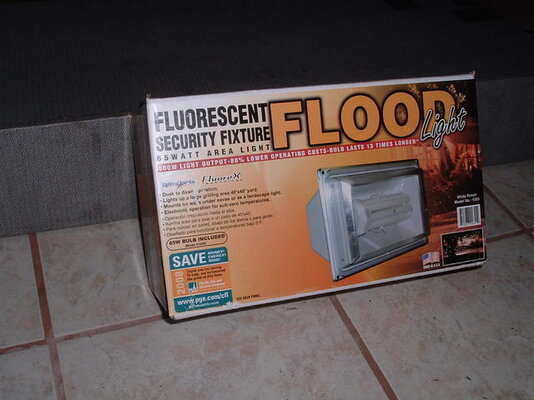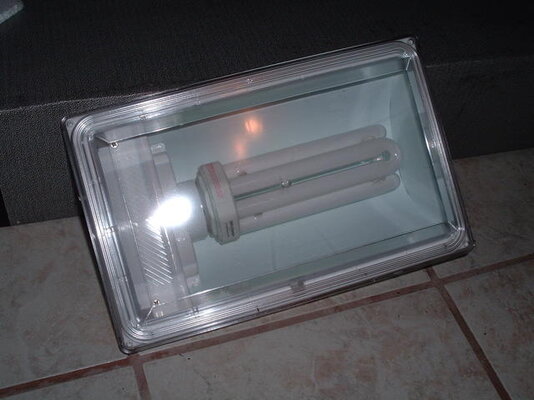- Joined
- Aug 5, 2006
- Messages
- 1,295
- Reaction score
- 161
- Location
- between richards and montgomery
- First Name
- rick
- Last Name
- hirsch
I just installed some 65 watt fluorex flood lights. They put out a very white light (6500 kelvin)*** and are supposed to put out the same amt. of light as a 500 watt high pressure sodium. Bulbs are supposed to last 13 x an incandescent light. They also have a photocell for dusk to dawn operation. (I have mine on a switch.) While designed for outdoor service, I plan on using some in a 30 x 40' garage. I think 3 will light that area up like daytime. They may need some electrical tape over the photocell. I was able to easily read a newspaper 45' away from one of the outdoor fixtures. Home Depot has them for $44.00 but I bought 14 of them for $25.00 each on Ebay, that included the shipping. There are also 28? watt ones at the Depot.
***I know, kelvin is a temperature, zero k is minus 273 c. Electricians are using it as a brightness measurement as well. These lights make a regular light bulb look as yellow as a bug bulb on a front porch!
***I know, kelvin is a temperature, zero k is minus 273 c. Electricians are using it as a brightness measurement as well. These lights make a regular light bulb look as yellow as a bug bulb on a front porch!
Attachments
Last edited:



 Feel free to hang out and lurk as long as you like. However, we would like to encourage you to
Feel free to hang out and lurk as long as you like. However, we would like to encourage you to 

